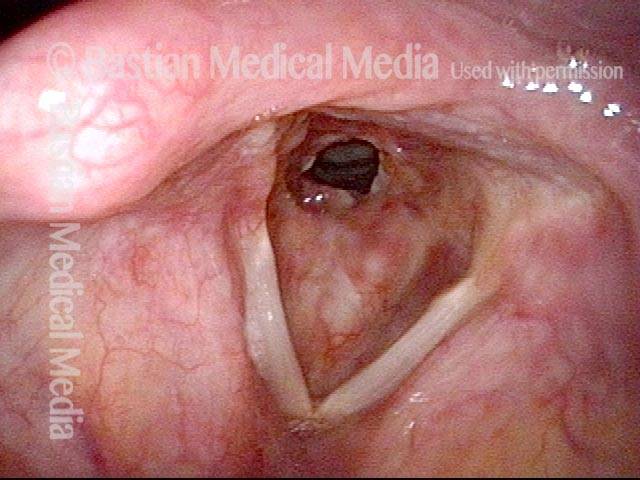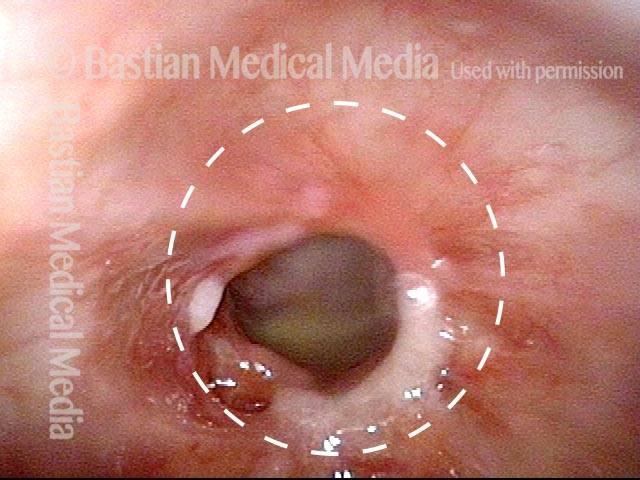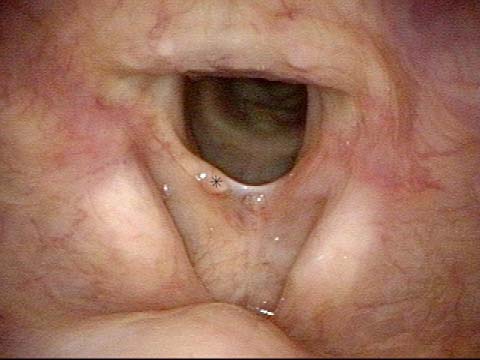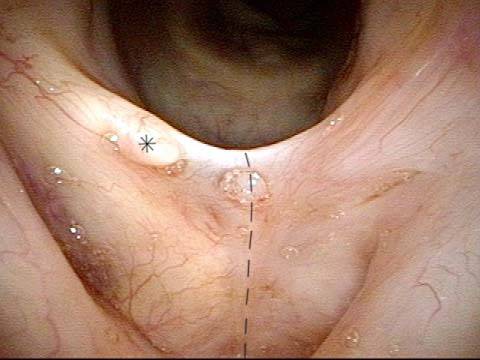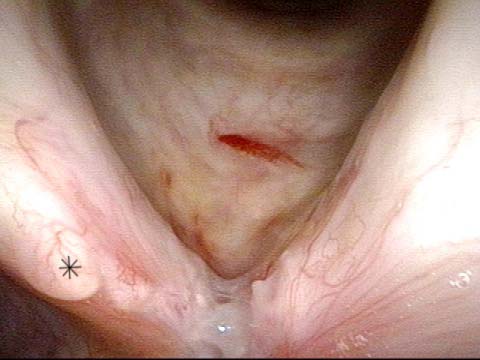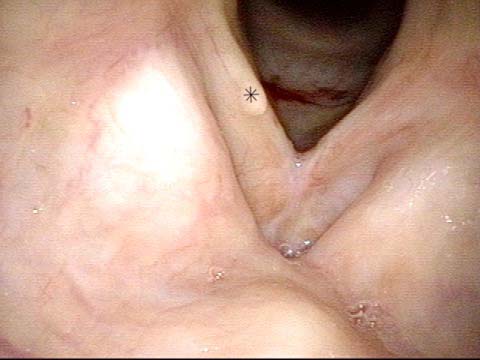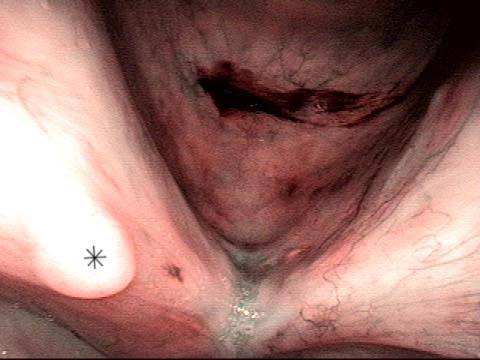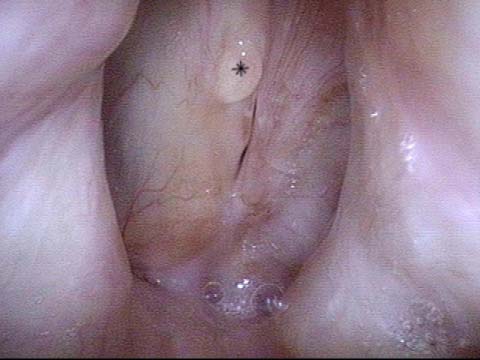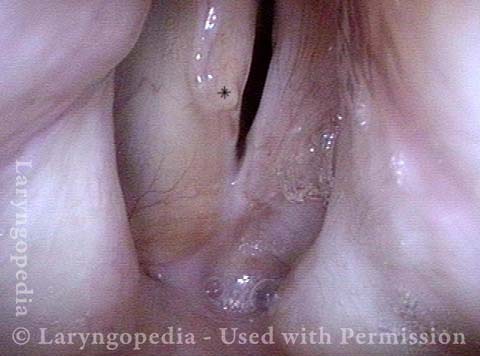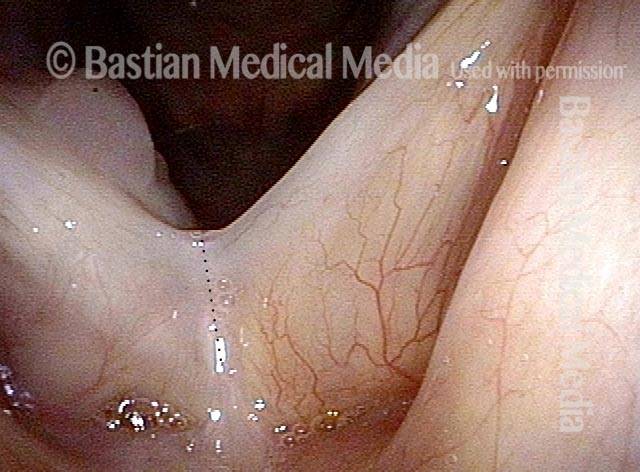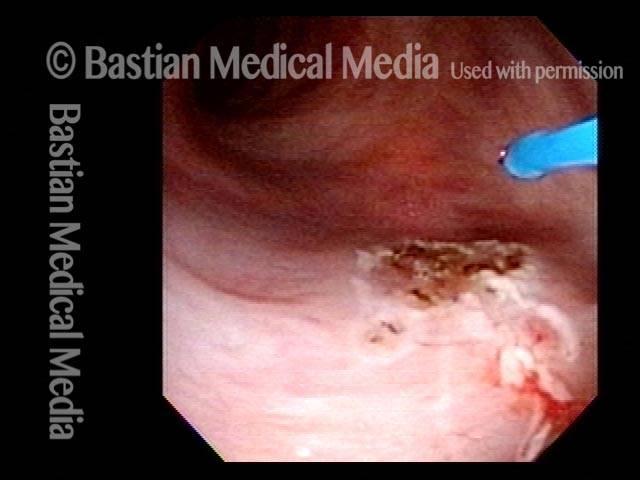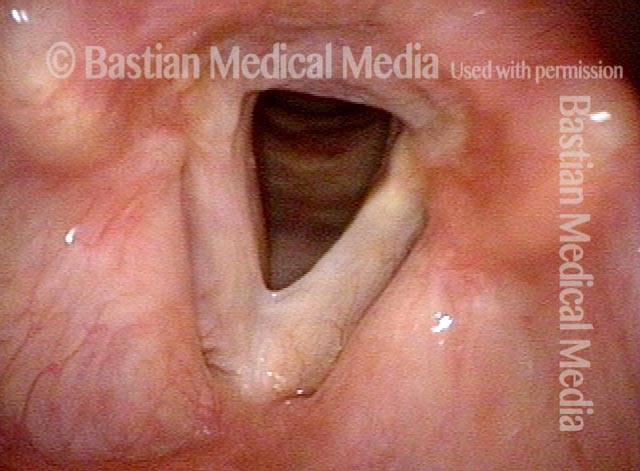Outside the field of laryngology, Mitomycin C is used more commonly as a cancer chemotherapy agent, but within laryngology, Mitomycin C is often applied by a clinician to prevent scarring after procedures like laryngeal or tracheal dilation or division of a glottic web. Topical application of Mitomycin C is used to prevent post-procedural scarring in the larynx or trachea.
A common way to apply Mitomycin C would be to take the drug in dilute form (e.g., 0.3mg per ml), saturate a cottonoid sponge with it, and then “paint” it on the area where one wants to inhibit a scarring response, holding the sponge in position for about three minutes. Mitomycin C’s mechanism of action is reported to be absorption of the drug by fibroblasts, which are then “decommissioned” from producing collagen, the major component of scar tissue.
